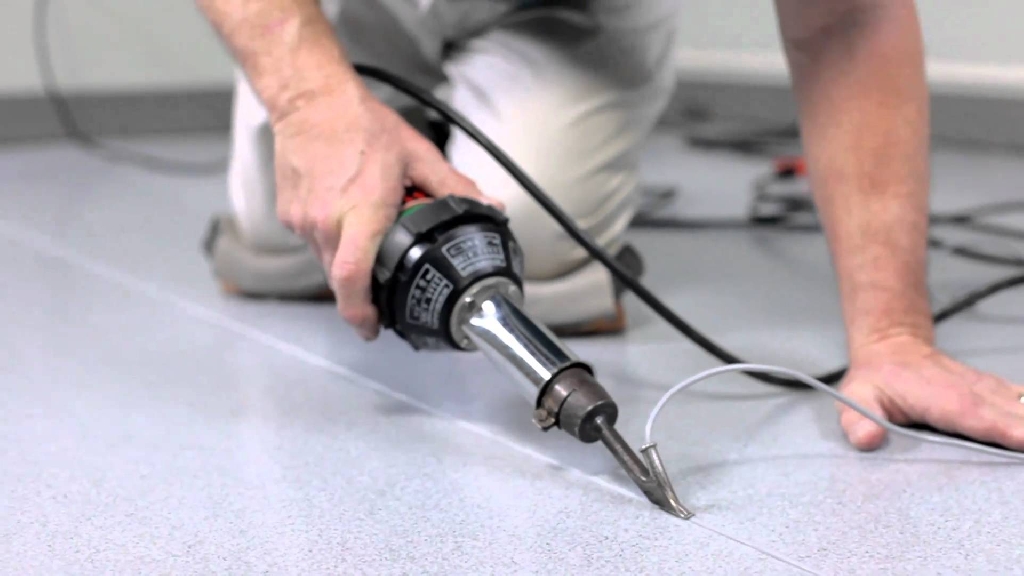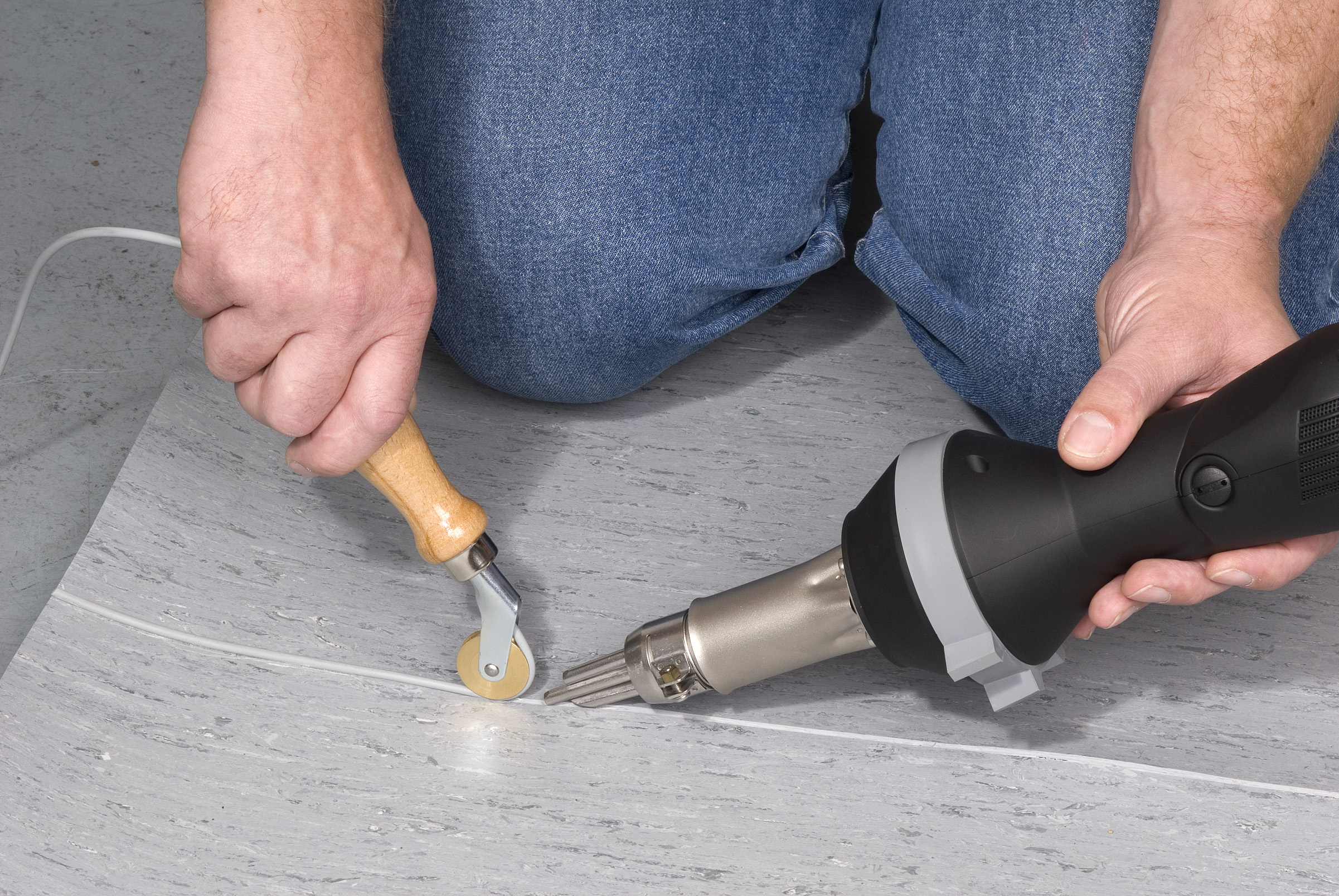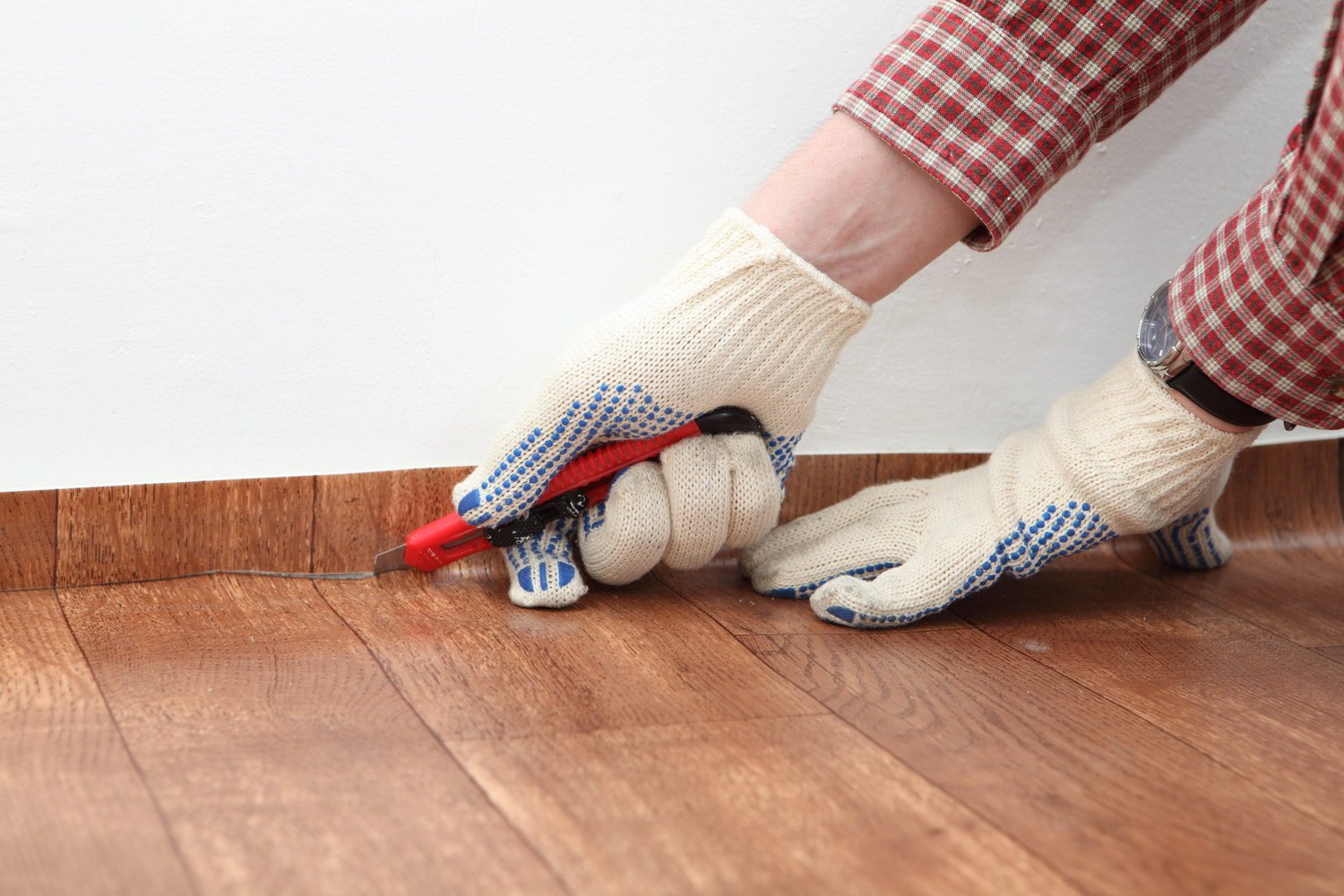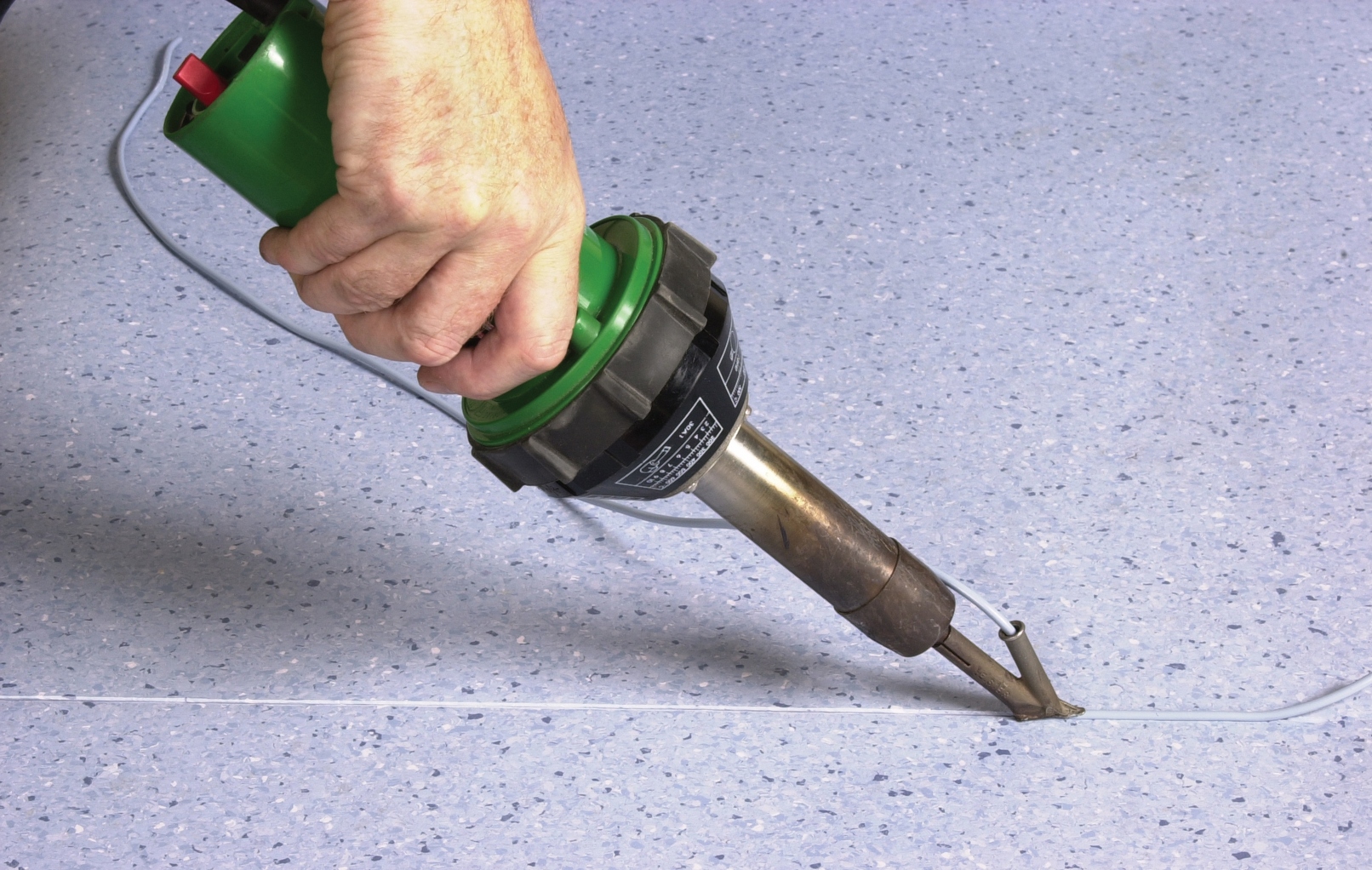Linoleum welding: hot and cold method
Content
The popularity of linoleum is due to its excellent appearance, as well as strength and practicality. However, these advantages can be reduced to zero if, when laying this building material, the joints of his canvases will be with clearly visible seams, therefore, their correct sealing, which ensures both the integrity and strength of the floor covering, is so important.
For a good connection of pieces of linoleum, two types of welding are used, one of which is called hot, and the other - cold. The choice of a specific type of welding depends on the actual situation and on the type of linoleum.
Depending on the place of application (offices or residential premises), linoleum is divided into commercial and household.
In rooms that are visited by a large number of people, linoleum is subjected to significant loads, therefore, in public places for this type of coating, as a rule, very durable material is chosen. At the same time, such linoleum with increased resistance to abrasion is welded using the hot method, and work is carried out only by professionals using fairly expensive equipment.
The cold method is usually used when there is a coating of linoleum of small thickness and with not very high strength characteristics. Such material is most often used in apartments.
Hot welding linoleum
It can be performed only by specialists who have in their arsenal a special cord and a special welding machine, with the help of which hot welding of linoleum joints at the proper quality level is ensured. The essence of the process is as follows: at the junction of the sheets of linoleum, a groove is cut, corresponding in shape to the profile of the aforementioned cord (also called a filler rod), which is used as a connecting element.
For the manufacture of a cord / bar, which can have both round and triangular sections, plasticized PVC is used, so that it is easily softened already at a temperature of 350 ± 50 ° C. The rod is inserted into the apparatus for welding linoleum and with the help of this tool it is introduced into a pre-prepared groove and is driven, indenting, along the joint line.
In this case, excess soldered rods are removed using a month-old knife, but not at a time, but in several stages. First, the largest unnecessary part of the cord is removed. At the same time, in the process of work, a special plate called a slide must be placed under the knife. And after the seam cools down completely, the rest of the connecting material is removed with the same knife, but without a sled, moving it along the plane of the coating. You can not immediately remove the entire bar, because if it has not cooled completely, then in some places, when the seam is cooled, pits and dents may appear, caused by the “retraction” of the cooled cord material.
Hot welding of linoleum at home is not used, since when heating household linoleum to a high temperature, not only seams, but also part of the floor covering can melt.
How to glue linoleum with cold welding?
Today, at the household level, glue called "cold welding for linoleum" is increasingly being used.This tool with excellent bonding properties is sometimes referred to as liquid welding. It is more often than other glues used by professionals in carrying out modern construction work.
This glue can be used not only for welding linoleum, laid initially, but also for joints of linoleum during its repair. The main advantage of this method of joining the coating webs is the high gripping power of one piece of flooring material with another. The application technology is simple and does not differ significantly from other gluing methods, but the result is always at a very high level. Often, such glue is used for fixing baseboards, as well as various decorative PVC products.
Laying linoleum lead, sequentially connecting with adhesive for welding each subsequent sheet of material with the previous one, placed exactly in the intended place. Due to the fact that welding linoleum canvases is made with colorless glue, the bonding places are not noticeable.
What are the types of glue called cold welding?
There are several types of this adhesive, differing in properties and methods of application.
Type A
This glue has a liquid consistency due to the large amount of solvent contained in it and facilitating the processing of the bonding site. It can not be used when connecting sheets of glued material, the width of the gap between which exceeds two millimeters.
The main advantage of using type A glue is the accuracy of the weld and the invisibility of the welding joint for the eyes, while at the same time ensuring the high strength of the obtained liquid weld, but such glue is not recommended for repairing linoleum coatings. Its use is preferable in cases where the code needs to be glued to each other with new stripes of linoleum.
Type C
Such glue differs from the previously written one in that it has less solvent, and therefore it looks like more thick. It can be used in the case when the distance between the sheets of linoleum is 2-4 millimeters. It is also possible to use type “C” glue in repair work, including for repairing cracks, often found in old coatings. When this type of glue dries, a dense seam with high strength is formed.
Type T
This type of adhesive is intended mainly for professionals working, as a rule, in the industrial sector. It is rarely used for private use. T-type adhesive is excellent for bonding multicomponent linoleum types based on polyvinyl chloride and polyester. The result of its use is an elastic, flexible, but reliable seam.
What else can be done with cold welding?
There are other brands of adhesives that can be used for cold welding of linoleum sheets. You can name, for example, two of them, and their technical characteristics are given below.
- Sintex H44. Drying time “for detachment” - 20 minutes, solidification time - 2 hours, full polymerization time - 24 hours, maximum joint width - 4 mm.
- EP-380. The strength of the seam is 3500 PSI, the temperature of use is not more than 93 ° C, the solidification time is less than 15 minutes, the setting speed is about 4 minutes.
A characteristic feature of these grades is that they have a low melting point, lower than that of cold welding used for joining metals, but this is not important in case of working with linoleum.
What you need to consider when choosing a glue type "cold welding"?
Glue for cold welding is now offered in a wide range. The main thing to consider when choosing an adhesive for welding linoleum sheets is the purpose of bonding.
In those cases when it is required to repair an already finished coating, it is better to choose adhesives with a denser consistency, in which the concentration of PVC is greater and the solvent is less.This will give high strength to the seam when gluing damaged fragments and sealing cracks. The same type of glue will turn out to be more suitable for joining new pieces of flooring, but cut unevenly, or if the joint has a “walking” gap.
If new linoleum sheets are used, professionally prepared, precisely cut, then you can choose glue with a higher percentage of solvent and less PVC for gluing them. Due to this composition, high ductility and low visibility of the resulting connecting seam between linoleum webs will be ensured. The gripping force in this case will be slightly less than in the first option described above, but given that the loads to which the flooring of residential premises is subjected are also small, this will not be critical.
The glue consumption in both the first and second versions will be almost the same.
DIY linoleum welding: sequence of actions
In order for the linoleum welding to be of high quality, it is necessary to observe a certain technology, which looks like this:
- First, two strips of linoleum are laid out so that they overlap by a size of 3-5 centimeters.
- Further, these two overlapping strips are cut simultaneously on a metal bar, due to which an ideal joint between them is ensured.
- After cutting linoleum, its scraps are removed.
- A double-sided tape is glued to the floor under the location of the future seam of the coating, which will prevent glue from spreading over the floor surface and fix the seam area.
- The seam area is wiped with a rag: for high-quality welding, it must be clean and dry.
- Special cold-resistant paper tape is glued to the middle of a tightly cut seam. This is done in order to avoid damage to the top layer of linoleum.
- With a knife with a round blade, the adhesive tape is cut in the seam area along its entire length. You can use other types of knives, but the main thing is to ensure that during cutting do not damage the edges of linoleum.
- After cutting the paper strip, it is rolled up tightly with a roller to prevent cold welding from getting under the surface of the paper.
- A special nozzle in the form of a needle is installed on the tube with glue, through which liquid adhesive content will flow.
- Next, the needle is inserted into the gap between the sheets of linoleum, and with a slight pressure the glue is squeezed out of the tube into the gap of the joint.
- After filling the gap, it is necessary to wait some time, which is usually indicated in the instructions for a specific type of cold welding, and remove the paper tape, removing it at an acute angle.
Knowing the technology of using cold welding, you can independently carry out not only repair of linoleum, but also its laying. Read all instructions carefully and choose the right type of glue when buying. I wish you success!





















